7.1- Are most of us average?

Why is the shape of this curve so well known?
Why is it fundamental to statistics?
If we classify the inhabitants of a town, the leaves on a tree..., according to a characteristic (size, weight, IQ, level of competence...) the more one approaches the average for each criterion the more individuals there are.
The further from the average, the fewer they are. At the extremities, there is almost no one. The graphic representation of this fact is called a Gaussian curve. The universal character of the curve was originated by Laplace who said that Gaussian distribution is the accumulation of many small and independant factors.
- Pierre Simon de Laplace (1749-1827)
- Karl Friedrich Gauss (1777-1855)
Experience on table
One chance by two?
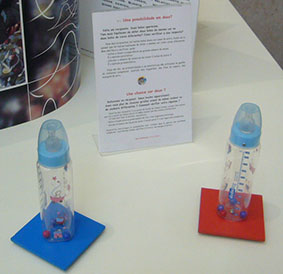
Turn one bottle upside down; two balls appear.
Do you have a better chance of getting 2 balls of the same colour, or 2 balls of different colors?
How to be sure?
To remember
In one bottle, you have 2 balls of each color.
You can think you have equal chance to get the same colour or different colours. It is not so!
To confirm, you can:
* repeat the experience a lot of times
- It is a statistic approach -
* or calculate how many ways you have to gather 2 balls among 4. It’s a probabilistic approach.
In our today’s world, statistics and probabilities are very much used to understand and cope with very complex systems as rocket launching, waiting queues, errors handling, etc.
Idea & Realisation: Centre•Sciences
7.2- How to borrow money?
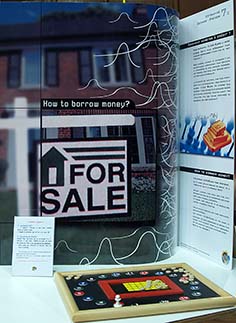
You borrow 10000 €uros from your bank.
Is it more advantageous to repay at a fixed rate or at a variable rate?
Without algebra, how could one find out? Mathematics help us to understand and interpret these financial contracts.
To ignore them would be to be defenceless against commercial practice.
The situation is identical, but more complicated, with investments.
You deposit 10000 €uros in the bank: in exchange the bank undertakes to return this amount with interest -eventually- dependent on the monetary and stock exchange index.
Who is the winner ?
Experience on table
And the Winner is…
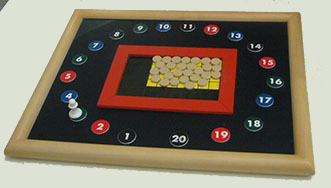
Two games – two players
A- The race to 20 !
Each one in turn, move forwards 1 or 2 cases.
⇒ The winner is this one who reaches first the 20th case!
B- Chocolat squares
Place all coins on the 4x7 rectangle.
Each one, in turn, take off one marker and all the others which are on its left and below it.
⇒ The loser is the one who turns the last marker, on the top, at righthand corner.
To remember
In both games, there is a winning strategy and the one who plays 1st win!
But for one of the two games, the winning strategy is not easy to find!
Idea: Guy Brousseau, Douglas Gale - Realisation: Centre•Sciences
7.3- Bingo!
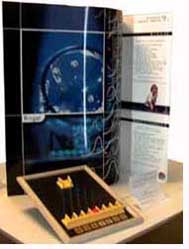
Recipe: Take a plane to Germany
- Take a phone book of the country
- Board the plane
- When you cross the border, open the phone book
- Choose a name at random, note its telephone number and slip it into your pocket
- Put on a parachute
- Open the door of the plane and...
- On landing, walk at random, straight ahead
- Ask the first person you meet for his name and telephone number
- Compare with the name and number you put in your pocket
- What luck! They are the same!
You have won to Eurobingo! * Germany has about 82 million inhabitants. * So, their is a chance in 76 275 360 of winning the Jackpot!
Experience on table
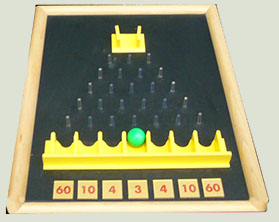
Get “1 €uro” in the Good Place!
Bet one €uro on one of the squares.
If the marble falls in this case, you will win more €uros!
To remember
The squares do not all have the same chance to win!
Some are more fortunate than the others.
The owner of this type of game is those who wins mostly.
Idée & Réalisation : Centre•Sciences
© Photos: Jennifer Plantier, Lyon Museum
